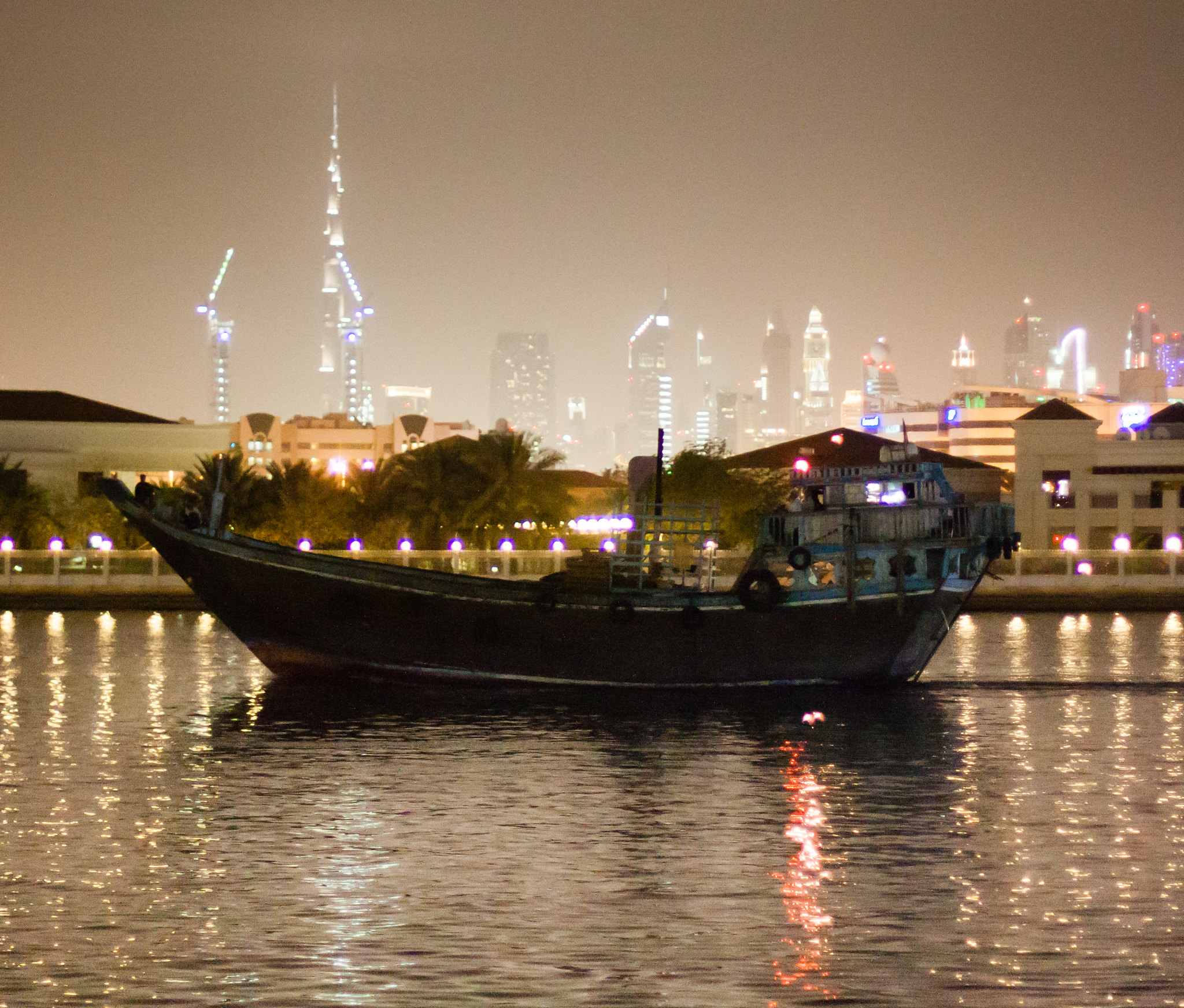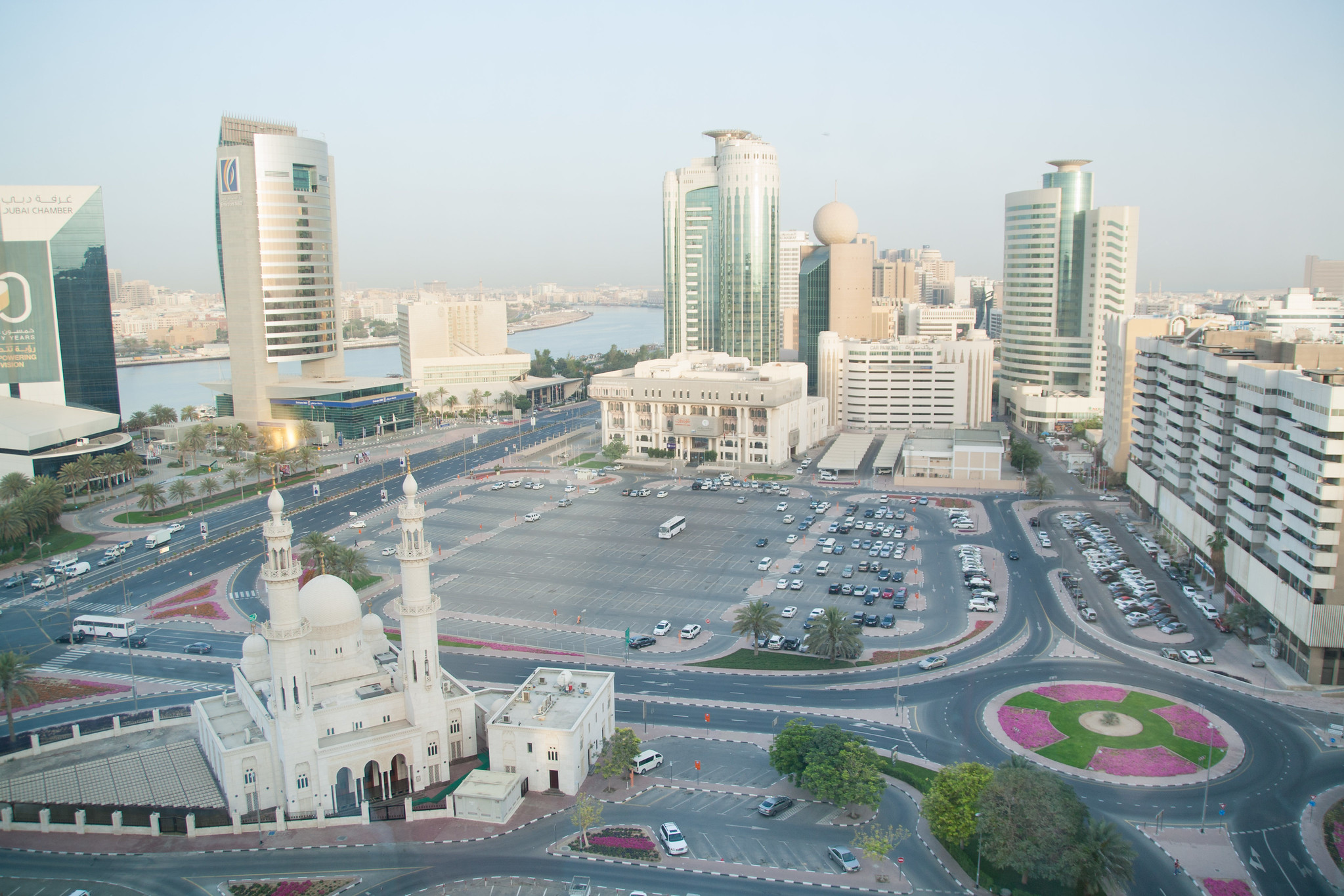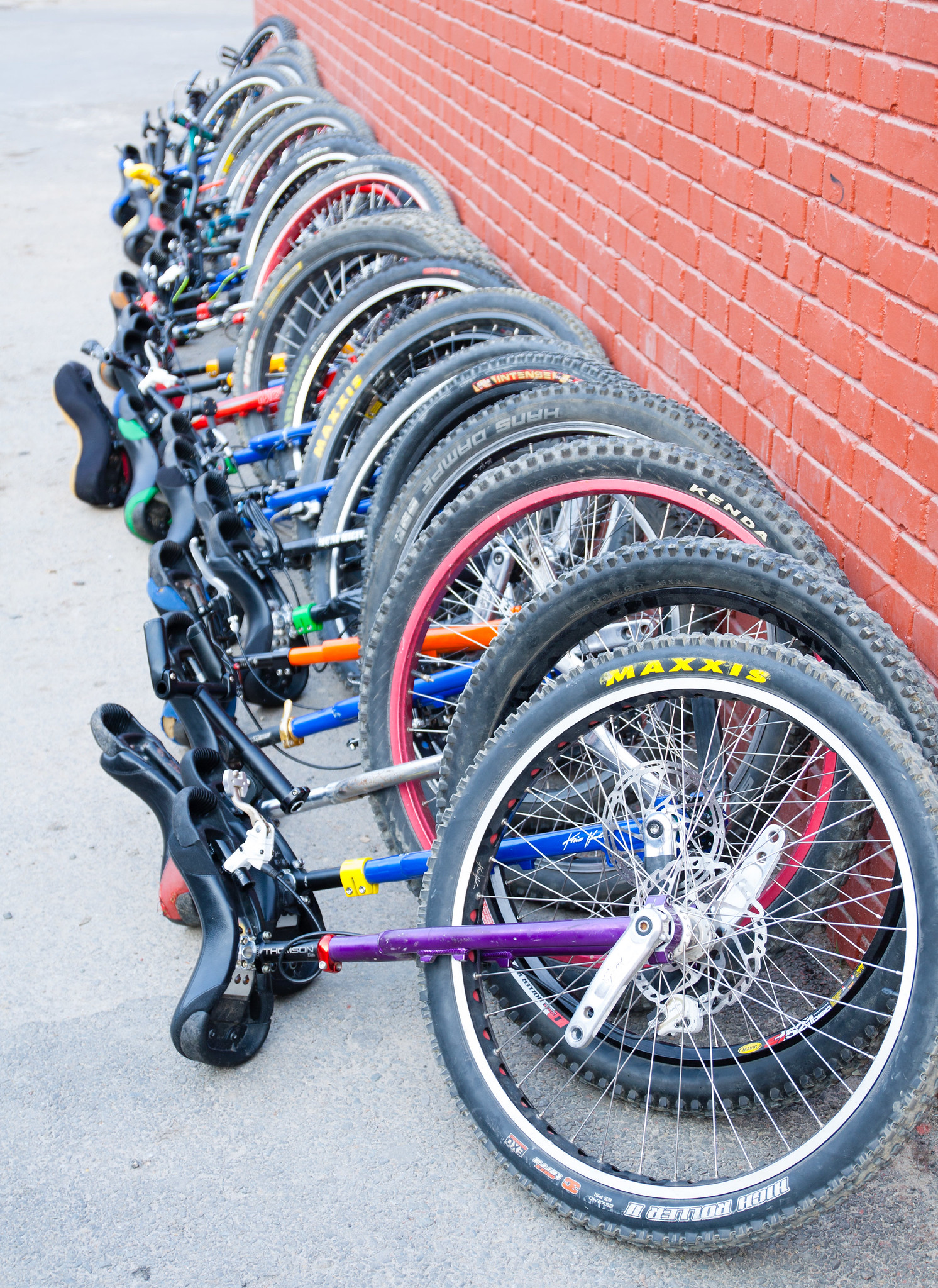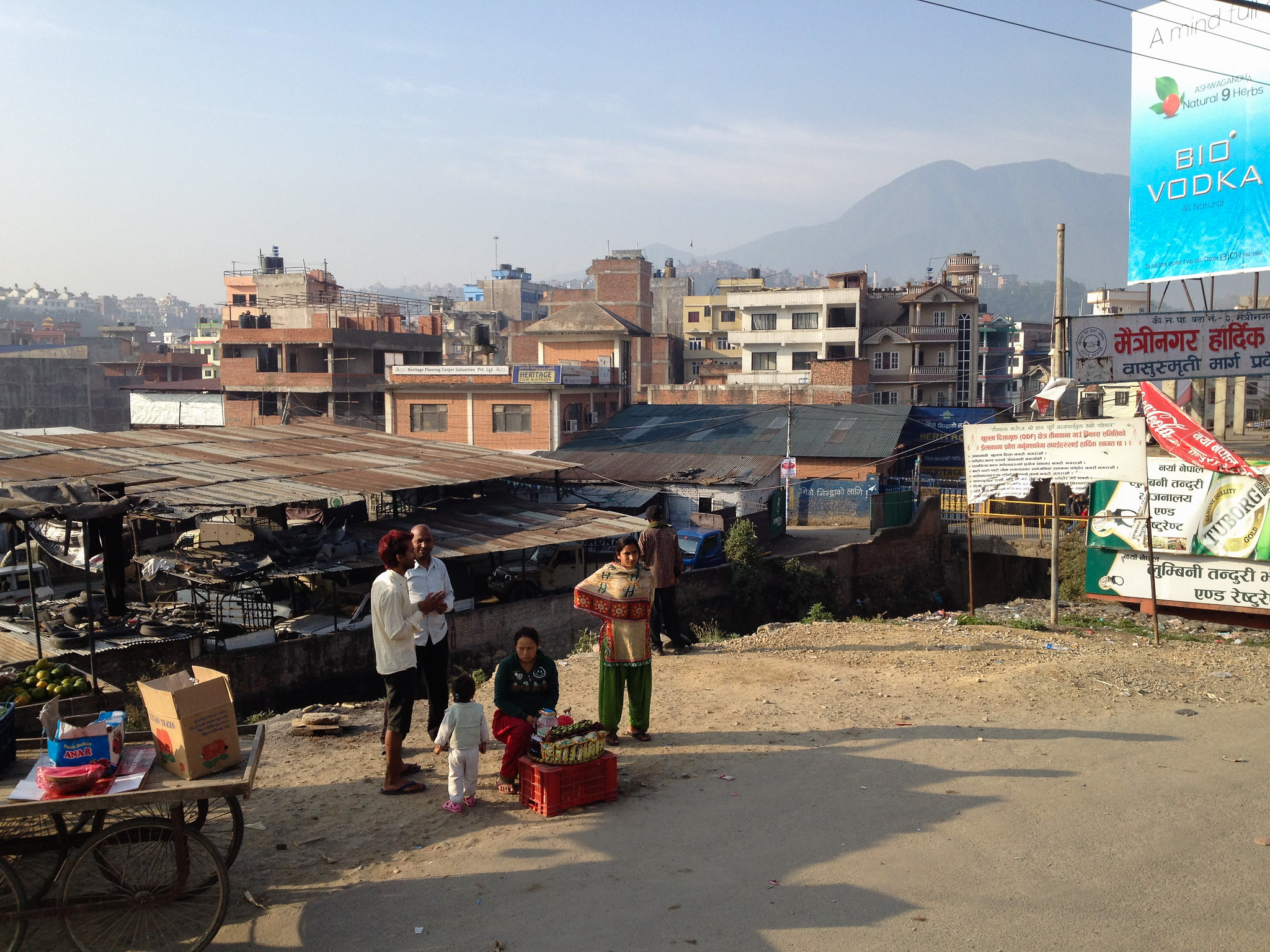Oakland to Dubai
The first part of the epic was travel. Nepal is more or less exactly on the other side of the Northern Hemisphere relative to Oakland, so it’s a long flight however you choose to take it, and all the connections are weird. You can go either east or west; Chris and I decided to Fly Emirates and do an 18-hour layover in Dubai. The Airbus A380 helped smooth out the 15-hour flight, and we love the cabin crew’s hats.
Dubai is like Vegas, nakedly aspirational and wealthy, except instead of being funded by suckers putting money into slot machines, it’s funded by suckers putting money into gas tanks. We got in late in the evening, checked into our hotel and took a walk by the dhow wharf, seeing the interesting contrast between the old wooden ships, still loaded by hand, and the hyper-modern Blade Runner-style skyline.

There were some nice-looking sidewalk cafés, but instead of serving beer, they smoke shisha, so they’re not nice-smelling. Unless you’re into that kind of thing, which I’m not. So we went back to the hotel and crashed.

We awakened at sunrise to the sounds of chanting at the mosque outside our hotel. Our plan was to head to the Burj Kalif, the world’s tallest building, via the Dubai metro. The metro is pretty nice, way better than anything the Bay Area has; driverless, efficient, and clean. Chris led us (Rule #1: Don’t follow Chris) into the women-only section of the train, but after enduring a few dirty looks, we found the right spot as the car got really packed with commuters. We got confused about where to get off and pushed our way through the crowd at the wrong stop, forcing us to grab a cab to get where we were going; we had limited time to do the tower and still catch our plane to Kathmandu.
The cab dropped us off a decent walk from the building, and Chris (don’t follow Chris) ran right past the entrance to the mall and tower. After running back to the right place, and checking our bags (no suitcases allowed up the tower, and everything has to go through security scanners), the impressive turbo elevator took us to the top. Amazing views up there, but obnoxious selfie stick density.

We zipped out of there and got to Terminal 2 in the airport by metro and cab. Terminal 2 is the domestic terminal; the metro doesn’t go there. It’s like a bus station, crowded, with people everywhere. Eventually we found a seat and got on the plane to Kathmandu.
Kathmandu
Kathmandu’s airport is small and chaotic. We had gotten the good advice to use the self-service visa kiosks (most of which were broken) instead of standing in line, but then made the mistake of going into the passport line without paying for the visa first. That cost us about 20 minutes in line. We had no problem claiming our bags, but when we got outside, the promised car waiting for us wasn’t there. That put us in the position of haggling with cab drivers about the fare to our hotel. Nepal is a trading country, so haggling is expected in many contexts, and for something like an airport cab ride, it can be the difference between paying 1000 or 300 rupees (US dollar exchange rate is ~100:1, so $10 vs. $3). We wound up paying $15 to get to our further-out hotel; most tourist hotels are in the Thamel neighborhood, but we were in Lazimpat. We probably could have gotten there for half that amount, but we were travel-weary and thus not good hagglers.
Kathmandu traffic is dramatic, especially at night. In the U.S., we drive on the right side of the road, while in Kathmandu, they drive on both sides. Streets are thronged with taxis, trucks, motorcycles, pedestrians, and bikes, all weaving around and through each other with no formal traffic controls. It’s chaotic, but in some ways it works better than the smoothly-defined roads of Dubai where cars are expecting to never have to slow down.
We got to the hotel, paid way too much money because of a confusion about Nepali bills (denominations are printed in Arabic as well as Sanskrit numbers, so a 500 rupee note can look like a 100 rupee note if you’re not careful), and the tour group sent a guide to bring us to the restaurant where the rest of the group was finishing up dinner. We had a good meal (the staple in the main cities is dal bhat, lentil soup over rice), along with a bit of traditional Nepali music and dance.

One thing we learned at dinner is that there would be a previously unannounced weight limit for stuff being carried by porters on the trail. We would have one porter per two riders (so, 14 total), and each porter was limited to carrying 30kg. Some of us had packed light for humanitarian reasons, but others had brought a lot of stuff that had to be left behind. When we got back to the hotel there was a lot of scrambling as people rearranged their stuff into carryable bags.
The hotel was pretty fancy (we couldn’t comprehend how fancy until we came back after a week in the Annapurna), but for us it was just a place to sleep before getting up early the next morning. It turns out that there was a general strike called for the next three days, so we were hitting the road by 7:00 AM to try to avoid roadblocks and other potential nuisances.
The road to Bagarchhap
We were scheduled for nine hours in buses and jeeps to get to the start of the trek. There is a paved road up and around the foothills to the town of Beshisahar, and a new 4×4 jeep road (completed in 2012) that we would be taking to Bagarchhap, a trekking village where we would be starting our ride.

On the way out we got to see more of Kathmandu, which looks a lot like any other developing city; tin roofs, dilapidated buildings, open sewers.

Transport was complicated by the general strike. Nepal is currently without a constitution, and opposition parties, primarily Maoists, are calling for a shutdown of all business in the country for three days, with threats of violence for anyone who was working. It’s hard for an outsider to get the politics, but from what I understand, the opposition wants a federalized system, where local regions have separate assemblies and laws based on ethnic considerations, while the ruling party wants a unified Nepal. Nepal has historically been a crossroads, with strong influences from India, China, and Tibet, which are roughly geographically distributed.
In any case, at various points along our trip we reached checkpoints where the authorities would hold us while we awaited an escort for our protection.

This slowed down the trip considerably, but it also gave us the opportunity to spend a little time in some of the villages along the way, and even to play some sandlot cricket with some of the locals. Jason, one of our organizers, was an Aussie who could bowl a bit.

We reached the end of the paved road in Besisahar in the early afternoon, and had our last bit of fanciness for the trip, lunch at an upscale resort (they were building an infinity pool). Then we transferred to a fleet of Indian-made jeeps to tackle the 4×4 road.

The road has only recently been cut into the cliffsides. Nepal has limited road-building equipment available, so it’s extremely rough by our standards. They didn’t have bulldozers and road graders up here (except near the hydro projects); most of the road was probably built with dynamite, a backhoe, and hand labor. (We saw people manually chipping rocks into gravel). Even a massive road engineering project would be challenged to get through this terrain: it was steep and rocky, with frequent waterfalls and river crossings.
This translated to many hours of being bounced and jolted around in the jeeps. Many, many hours, it turned out. Even though we were mostly past the police checkpoints, the going was very slow. If you put Besisahar and Bagarchhap into Google Maps, it will tell you the trip will take 1 hour 40 min, but I think that’s only if you’re Travis Pastrana. For us it continued well into the night, about nine hours on the road, putting us in town, exhausted, at 11:00 PM. Some people felt too tired for dinner, but the folks at the tea house were kind enough to prepare a quick meal, and everyone had at least a little sustenance before retiring for the evening.
Riding starts tomorrow at 9:00.
[flickr_tags tags=”unipal, pretrip” tags_mode=”all”]